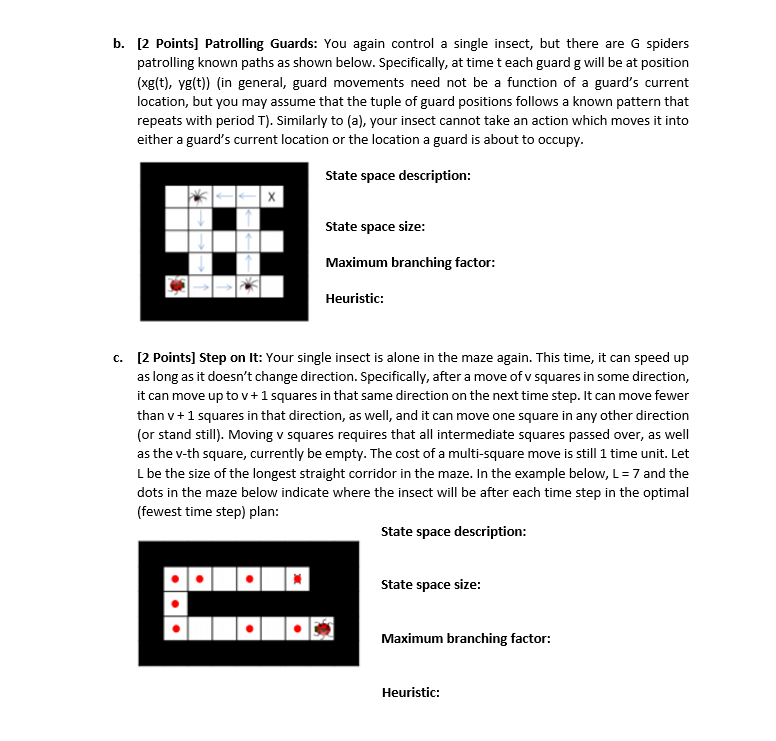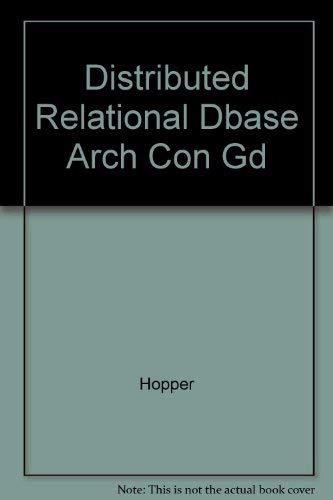
b. [2 Points] Patrolling Guards: You again control a single insect, but there are G spiders patrolling known paths as shown below. Specifically, at time t each guard g will be at position (xg(t), yg(t)) (in general, guard movements need not be a function of a guard's current location, but you may assume that the tuple of guard positions follows a known pattern that repeats with period T). Similarly to (a), your insect cannot take an action which moves it into either a guard's current location or the location a guard is about to occupy. State space description: EED State space size: Maximum branching factor: Heuristic: [2 Points] Step on It: Your single insect is alone in the maze again. This time, it can speed up as long as it doesn't change direction. Specifically, after a move of v squares in some direction, it can move up to v+1 squares in that same direction on the next time step. It can move fewer than v+ 1 squares in that direction, as well, and it can move one square in any other direction (or stand still). Moving v squares requires that all intermediate squares passed over, as well as the v-th square, currently be empty. The cost of a multi-square move is still 1 time unit. Let L be the size of the longest straight corridor in the maze. In the example below, L= 7 and the dots in the maze below indicate where the insect will be after each time step in the optimal (fewest time step) plan: c. State space description: State space size: Maximum branching factor: Heuristic: b. [2 Points] Patrolling Guards: You again control a single insect, but there are G spiders patrolling known paths as shown below. Specifically, at time t each guard g will be at position (xg(t), yg(t)) (in general, guard movements need not be a function of a guard's current location, but you may assume that the tuple of guard positions follows a known pattern that repeats with period T). Similarly to (a), your insect cannot take an action which moves it into either a guard's current location or the location a guard is about to occupy. State space description: EED State space size: Maximum branching factor: Heuristic: [2 Points] Step on It: Your single insect is alone in the maze again. This time, it can speed up as long as it doesn't change direction. Specifically, after a move of v squares in some direction, it can move up to v+1 squares in that same direction on the next time step. It can move fewer than v+ 1 squares in that direction, as well, and it can move one square in any other direction (or stand still). Moving v squares requires that all intermediate squares passed over, as well as the v-th square, currently be empty. The cost of a multi-square move is still 1 time unit. Let L be the size of the longest straight corridor in the maze. In the example below, L= 7 and the dots in the maze below indicate where the insect will be after each time step in the optimal (fewest time step) plan: c. State space description: State space size: Maximum branching factor: Heuristic







